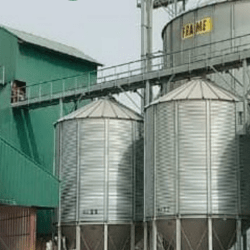The concept of strategic food reserves in Nigeria has evolved significantly, shaped by the country’s socio-economic needs, agricultural policies, and global trends. Designed to ensure food security, stabilize prices, and provide emergency food relief, these programs reflect Nigeria’s commitment to sustaining its agricultural sector and safeguarding its population against food crises.
The evolution of strategic food reserves in Nigeria reflects the country’s resilience and commitment to food security. While challenges persist, continued reforms, technological advancements, and collaborative efforts hold promise for a more robust and sustainable system. By addressing gaps in implementation and ensuring policy continuity, Nigeria can further strengthen its strategic reserves, safeguarding its population against future food crises.
Origins and Objectives of Nigeria’s Strategic Food Reserves
The Food Strategic Reserve Programme was introduced with three primary goals:
- Emergency Food Relief: Addressing food crises both domestically and internationally.
- Market Accessibility: Providing a dependable market for locally produced food items via the “Buyer of Last Resort” (BLR) mechanism.
- Price Stability: Regulating food prices to ensure affordability and encourage local production.
Early Policies and Initiatives (1970–1985)
During the 1970s and early 1980s, the Nigerian government prioritized increasing agricultural production. Key policies and programs included:
- Agricultural Commodity Marketing and Pricing Policy (1977): Designed to manage agricultural commodities and ensure fair pricing.
- Establishment of National Commodity Boards: Six boards were created to oversee specific crops such as cocoa, groundnut, palm produce, cotton, rubber, and food grains. These boards facilitated agricultural growth and served as regulatory mechanisms.
Structural Adjustment Programme (1986): A Turning Point
The Structural Adjustment Programme (SAP) introduced in 1986 marked a pivotal shift in Nigeria’s agricultural policies. Its emphasis on trade liberalization and reduced government intervention led to:
- Abolition of Commodity Boards: This ended the centralized control over pricing and marketing.
- Increased Private Sector Participation: Farmers and private entities were encouraged to play a more active role in the agricultural value chain.
The Three-Tier Storage Policy (1987)
To address post-harvest losses and ensure food availability, Nigeria launched a three-tier storage policy in 1987:
1. On-Farm Storage Programme
- Objective: Handle 85% of the country’s food grain production and encourage farmers to store produce for better post-harvest pricing.
- Implementation: The Crop Storage Unit (CSU) trained extension officers and farmers in improved storage techniques. This led to the adoption of advanced on-farm storage structures.
- Challenges: Despite initial successes, the lack of consistent follow-up and extension activities limited its impact.
2. Buffer Stock Programme
- Objective: State governments were tasked with storing 10% of food grain production to stabilize local market prices.
- Federal Support: The Federal Government provided warehouse designs and funds for implementation.
- Challenges: Limited political will among state governments hindered the program’s adoption. While a few states like Niger, Gombe, Kano, Kebbi, and Oyo established warehouses, many others failed to participate fully.
3. Strategic Grains Reserve (SGR)
- Objective: Managed by the Federal Government, it aimed to store 5% of annual food grain production for emergencies and to support vulnerable populations.
- Role: The reserve became a critical component of Nigeria’s price stabilization and emergency response strategies.
Policy Developments and Reforms (1990s Onward)
Agricultural Policy of 1998
This policy emphasized:
- Macro-Economic Factors: Pricing, trade exchange rates, and land policy.
- Agricultural Support Services: Enhancing sectoral services to promote sustainable agricultural practices.
Commodity Exchange and Market Mechanisms
- Approval of the Commodity Exchange (COMEX) in 1995 and its subsequent establishment as the Abuja Stock Exchange (ASE) in 1998 signified a shift towards market-driven approaches.
- Rebranding as the Nigerian Commodity Exchange (NCX) in 2021 brought a new focus on efficiency, with the Central Bank of Nigeria taking over its management.
Emergence of Private Commodity Exchanges (2014–2022)
Four private exchanges were launched, including:
- AFEX Commodity Exchange
- Prime Exchange
- Lagos Exchange
- Gazawa Exchange
These entities introduced competition and innovation into Nigeria’s agricultural markets, fostering better pricing, transparency, and accessibility.
Key Challenges in Strategic Food Reserves
- Political Will: Inconsistent commitment by state governments undermined programs like the Buffer Stock initiative.
- Infrastructure Gaps: Limited storage capacity and outdated facilities hindered effective implementation.
- Policy Continuity: Frequent changes in leadership and policy direction disrupted long-term planning.
- Funding Constraints: Financial limitations affected the execution of storage and distribution programs.

Modernization and Future Prospects
Nigeria’s strategic food reserves have come a long way from their early conceptualization. Today, the focus is on:
- Technological Integration: Adopting digital platforms and IoT for monitoring storage conditions and supply chain management.
- Public-Private Partnerships: Encouraging collaboration between governments and private enterprises to enhance efficiency.
- Sustainability Initiatives: Emphasizing climate-resilient storage and reducing post-harvest losses through modern techniques.

















